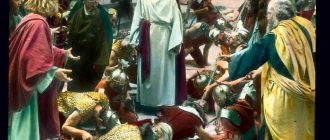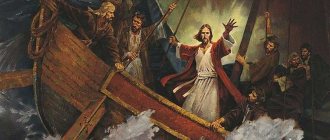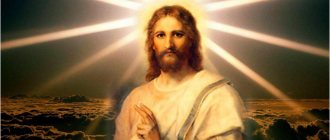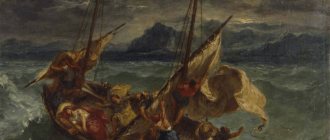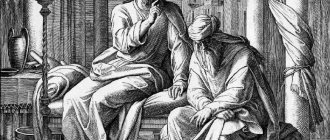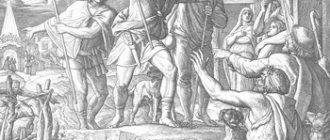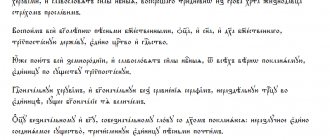The New Testament is the part of the Bible that comes after the Old Testament and consists of 27 books written in ancient Greek. The expression “New Covenant” is taken from the Book of the Prophet Jeremiah, in which God said that he would proclaim a New Covenant to the house of Judah. The Apostle Paul also wrote about the New Testament in his letters to the Corinthians.
There are several generally accepted texts of the New Testament in Greek. Our website contains the text of the 3rd edition of the Greek New Testament of the United Bible Societies.
What does the word Covenant mean? The word Testament is translated from the ancient Greek διαΘήκη, the basic knowledge of which was “testament”. The Epistle to the Hebrews says that a will will come into force after the death of the testator (Hebrews 9:16), and this meaning can only be attributed to the will of the deceased, but not to the contract.
Numbers
There are 27 books in the New Testament
- book 4
books, descriptions of the life and ministry of Jesus Christ (Gospel) - book
History of the emergence and development of the first Church (Acts of the Holy Apostles) - book
Instructions, letters (epistles of the Apostles),
21
books - book
Prophecy of the last days (book of Revelation)
The New Testament contains: the text of the 3rd edition of the Greek New Testament of the United Bible Societies
:
- done 138,015
Greek words - done 7,959
verses - done 259
chapters
Four Gospels
- The word "gospel" in Greek means "good news." This is what our Lord Jesus Christ Himself called his teaching (Matthew 24:14; 26:13; Mark 1:15; 13:10; 19:; 16:15). Therefore, for us, the “gospel” is inextricably linked with Him: it is the “good news” of the salvation given to the world through the incarnate Son of God. Christ and His apostles preached the gospel without writing it down. By the mid-1st century, this preaching was established by the Church in a strong oral tradition. The Eastern custom of memorizing sayings, stories, and even large texts helped Christians of the apostolic era accurately preserve the unrecorded First Gospel. After the 50s, when eyewitnesses of Christ's earthly ministry began to pass away one after another, the need arose to write down the gospel (Luke 1:1). Thus, “gospel” came to mean the narrative of the Savior’s teaching recorded by the apostles. It was read at prayer meetings and in preparing people for baptism.
- The most important Christian centers of the 1st century. (Jerusalem, Antioch, Rome, Ephesus, etc.) had their own Gospels. Of these, only four (Matthew, Mark, Luke, John) are recognized by the Church as inspired, that is, written under the direct influence of the Holy Spirit. They are called “from Matthew”, “from Mark”, etc. (Greek kata corresponds to Russian “according to Matthew”, “according to Mark”, etc.), for the life and teachings of Christ are set out in these books by these four sacred writers. Their gospels were not compiled into one book, which made it possible to see the gospel story from different points of view. In the II century. St. Irenaeus of Lyons calls the evangelists by name and points to their gospels as the only canonical ones (Against heresies, 2, 28, 2). Contemporary of St. Irenaeus Tatian made the first attempt to create a single gospel narrative, composed of various texts from the four gospels, the Diatessaron, i.e., the “gospel of the four.”
- The apostles did not set out to create a historical work in the modern sense of the word. They sought to spread the teachings of Jesus Christ, helped people to believe in Him, to correctly understand and fulfill His commandments. The testimonies of the evangelists do not coincide in all details, which proves their independence from each other: the testimonies of eyewitnesses always have an individual coloring. The Holy Spirit does not certify the accuracy of the details of the facts described in the gospel, but the spiritual meaning contained in them. The minor contradictions found in the presentation of the evangelists are explained by the fact that God gave the sacred writers complete freedom in conveying certain specific facts in relation to different categories of listeners, which further emphasizes the unity of meaning and orientation of all four gospels.
Authors
It is believed that the second part of the Bible was written by 8
Human:
- person Matthew
is a tax collector. - person Mark
is Barnabas' nephew. - person Luka
is a doctor. - person John
is a theologian. - person Jacob
- considered to be the brother of Jesus Christ.* - person Peter
is an apostle. - person Judas
is an apostle. - person Paul
is the apostle of the Gentiles.
* - Many theologians question the authorship of the Epistle of James, as well as the authenticity of this book. Among them was Martin Luther, known as the founder of the Protestant movement.
There is also an opinion that the letter to the Hebrews came from the pen of Barnabas
, Paul's companion on his missionary travels. This is evidenced by the style of writing the epistle, which does not correspond to the general style of all the epistles of the great apostle of the pagans.
Good news to the Virgin Mary (Luke 1:26-38)
God sent Archangel Gabriel
to the city
of Nazareth to the Virgin Mary,
betrothed to
Joseph,
a descendant of King David. The angel said to Mary: “Rejoice, full of grace! The Lord is with You; Blessed are You among women."
The Virgin Mary was confused by these words and wondered what they could mean. The angel said: “Do not be afraid, Mary, for you have found favor with God. A Son will be born to You, and You will give Him the name Jesus. He will be great, for He is the Son of the Most High God.”
The Virgin Mary was perplexed: “How will this be when I don’t know my husband?” The angel answered: “The Holy Spirit will come upon you and the power of the Most High will overshadow you; therefore the Holy One who is to be born will be called the Son of God.” Then Mary answered: “I am the servant of the Lord; let it be done to me according to your word.”
Mary visits Elizabeth (Lk 1:39-56)
In the mountains of Judea lived an elderly priest, Zechariah
with his wife
Elizabeth,
who was a relative of the Virgin Mary. These were very pious people. Elizabeth at that time was expecting a child, the future Baptist of the Lord.
The Virgin Mary went to her to help. When She entered Zechariah's house, Elizabeth was filled with the Holy Spirit and greeted Her with the words: “Blessed are You among women, and blessed is the fruit of Your womb! And where does it come from for me that the Mother of my Lord came to me?” The Most Holy Virgin answered: “My soul magnifies (glorifies) the Lord, and My spirit rejoices in God, My Savior, that He has looked upon the humility of His servant; for from now on all generations will call Me blessed.”
The Virgin Mary stayed with Elizabeth for three months until John was born.
who was destined to become
the Forerunner and Baptist of the Lord.
SUFFERING. THE DEATH AND RESURRECTION OF JESUS CHRIST
***
The Crucifixion of the Lord Jesus Christ (Matt. 27:1-54; Luke 23:1-49;
In. 18:12-40, 19:1-37)
The Jews brought the Lord to the Roman governor Pontius Pilate, demanding the death penalty for Christ. Pilate, not finding any guilt in him, ordered the soldiers to scourge him, hoping that the Jews would be satisfied. Mocking Christ, the soldiers put a crown of thorns on Him,
they beat and mocked him, and then scourged him.
But the Jews did not let up and continued to insist on the execution of Christ. They persuaded the people to demand the crucifixion of Christ. And the same people who a few days ago shouted to Christ: “Hosanna,” now shouted: “Crucify Him!” The reason was that these people thought about earthly things:
about his independence, power over other peoples and about earthly well-being, therefore the idea of eternal life through salvation from sins, passions and evil was incomprehensible to him. The Jews understood and accepted the words “king” and “Kingdom of God” in the sense of earthly reign and dominion of God’s chosen people.
As you know, selfishness and selfishness turn any idea into evil, blind people, deprive their lives of spiritual meaning, and fill their activities with lies, hatred, greed and crimes.
At the request of the Jews, Pilate sentenced the Savior to death on the cross (even despite the fact that Pilate’s wife asked him not to cause Him any harm). The tortured Christ had to carry His cross Himself to Golgotha, the place of execution. This was the custom in those days. Christ was crucified along with two thieves, whose crosses on Calvary were to the right and left of Him. One of them mocked Christ, and the one on the right calmed the robber: “Or are you not afraid of God, when you yourself are condemned to the same thing? And we are condemned justly, for we accepted what was worthy of our deeds, but He did nothing bad.” Then he said to Christ: “Remember me. Lord, when will you come into your kingdom.” Christ answered: “Truly I tell you, today you will be with Me in Paradise.”
At the cross stood Mother and John, whom He commanded to become mother and son to each other. From that time on, John took the Mother of God to himself. And the Mother of God, through John, adopted the entire human race.
Around six o'clock in the afternoon darkness came and lasted until the ninth hour. Suddenly the earth shook, the sun darkened, and the curtain in the Jerusalem temple was torn in two. At the ninth hour the Son of God cried out in a loud voice: “Eloi, Eloi! lamma sabachthani? (which means: “My God, My God! why have you forsaken me?”). After this, Christ gave up his ghost.
Resurrection of Christ (Matt. 28:1-8; Mark 16:1-7; Luke 24:1-7)
Two Godly Men: Joseph of Arimathea
and
Nicodemus -
they took the Body of the Lord from the cross, wrapped it in the Shroud (pure white linen) and laid it in a coffin (a cave carved into the rock served as the coffin).
At the request of the Jewish high priests, a guard was placed at the tomb, and a seal was attached to the stone closing the entrance to the cave so that no one could steal the Body of Christ. But on the third day, the greatest miracle happened, which is narrated in the Gospel and testified by the Shroud of Turin. Christ rose from the dead and came out of the Shroud without unfolding it, and remained on earth for 40 days, and then, in front of the eyes of the disciples, ascended to heaven.
The first to learn about the resurrection of Christ were three women who came to the garden where His tomb was to anoint His Body with the aromatic oils they brought. Approaching the tomb, they saw that the stone had been rolled away, and in the cave there was an angel who informed them about the resurrection of Christ and sent them to tell His disciples about everything they had seen and heard.
The names of these women, now called myrrh-bearers
(myrrh - fragrant oil):
Salome -
the mother of John and James Zebedee, Mary - the mother of James Alphaeus, and
Mary Magdalene.
Book materials used:
A.V. Borodina Fundamentals of Orthodox Culture, Moscow, “Pokrov”, 2003
Orthodox icons:
| A | B | B | G | D | E | F | Z | And | K | L | M | N | About | P | R | C | T | U | F | X | C | H | SH-SH | E | Yu | I |
All religious terms:
Reunion of man with God
Old Testament man was in a slave, subordinate position before a loving but strict God. This was the only way to guide the lost creation to the right path. A rough man, damaged by sin, needed to “grow” to the spiritual state necessary for the Coming of the Messiah.
But thanks to the atoning sacrifice of the incarnate Christ, the long-awaited reconciliation of the Creator and His main creation took place. Now we can unite with God through the Sacrament of the Eucharist (Communion) established by the Savior. New Covenant participants are freed from the bonds of sin, endowed with grace, and called to holiness. Let us quote the words of Archpriest Alexy Chubakov:
“Every person is called to holiness. A person - in the Sacrament of Baptism, in the Sacrament of Communion of the Holy Mysteries of Christ - receives grace. That is, he receives talents, which he must preserve and increase, and then bring to the Lord. Each of us is a representative of the holy chosen people (see 1 Pet. 2:9). We must remember this and strive for this - to build a building of virtue.”
Prayers before and after reading the Gospel
Brief prayer before reading the Gospel
Lord, enlighten the eyes of my heart with the light of the mind of Your Holy Gospel.
Prayer of St. John Chrysostom
Lord Jesus Christ! Open the eyes of my heart, so that I may hear Your word and understand it and do Your will.
The prayer is different
Shine in our hearts, O Lord, the love of mankind, of Your knowledge of God, the imperishable light, and open our mental eyes to the understanding of Your gospel sermons, invest in us and Your blessed ones for lead us to fear, so that all carnal lusts may be trampled, let us pass through spiritual life, all of which is to please You and wisely and active. For You are the enlightenment of our souls and bodies, O Christ God, and we ascribe glory to You, with Your Beginning Father and Your All-Holy, and Good, and Life-giving Spirit, now and ever forever and ever, amen.
Translation: Light in our hearts, O loving Lord, Your imperishable light of knowledge of God and open the eyes of our minds to understand Your gospel preaching! Place in us also the fear of Your blessed commandments, so that we, trampling all carnal desires, may lead a spiritual life, thinking and doing everything that is pleasing to You. For You are the enlightenment of our souls and bodies, O Christ God, and we send up glory to You, with Your Originless Father and Your All-Holy, Good, and Life-giving Spirit, now and always, and unto the ages of ages. Amen.
Synoptic comparison of the Gospel texts
The advantage of synoptic comparison is that the evangelists themselves and their disciples clarify and complement each other first-hand with what they heard from Jesus. This gives you the opportunity to better understand the meaning of what you read, and use appropriate direct quotations from the Gospel to defend your own point of view in discussions on everyday and religious topics.
If, while reading a selected chapter of the Gospel, for example, Matthew, you are interested in whether it is possible to find similar explanatory information from other evangelists Mark, Luke or John on the topic of the verse of the Gospel of Matthew, then follow the link located above the text of the verse for a synoptic comparison of the texts of the Gospels .
Why is the New Testament called this?
“Covenant” in Christianity is a union, an agreement between the Almighty and man. By following the established covenant, a person remains in a grace-filled relationship with God and thereby saves his soul. Several such alliances were concluded in the pre-Christian era. Collectively they are called the Old Testament.
God made the very first agreement in paradise, with Adam and Eve. God blessed them to have dominion over nature, only forbidding them to try the fruits of the tree of the knowledge of good and evil. However, our ancestors violated the ban and thus severed their connection with God. Original sin allowed evil, sorrow and death into people's lives. The following pre-Christian covenants were concluded with the Old Testament righteous (Noah, Abraham, Moses and others). They were supposed to prepare a person for the coming of the Savior.
And so, two thousand years ago, the incarnate Lord redeemed us from the original and all subsequent sins. This event opened the era of a completely new relationship between God and man, which is called the New Testament. Unlike the Old Testaments, it was concluded not with a separate people, but with all of humanity. And not temporarily, but forever. Now everyone who believes in Christ and accepts Holy Baptism becomes a participant in a new union with God and can gain Eternal life. Let us quote the words of Saint Ignatius (Brianchaninov):
“Eternal bliss is spiritual, Divine. Only he can inherit this bliss who has previously dissolved communion with sin, who has previously entered into holy communion with God” (Complete Collection of Creations, volume 4).
